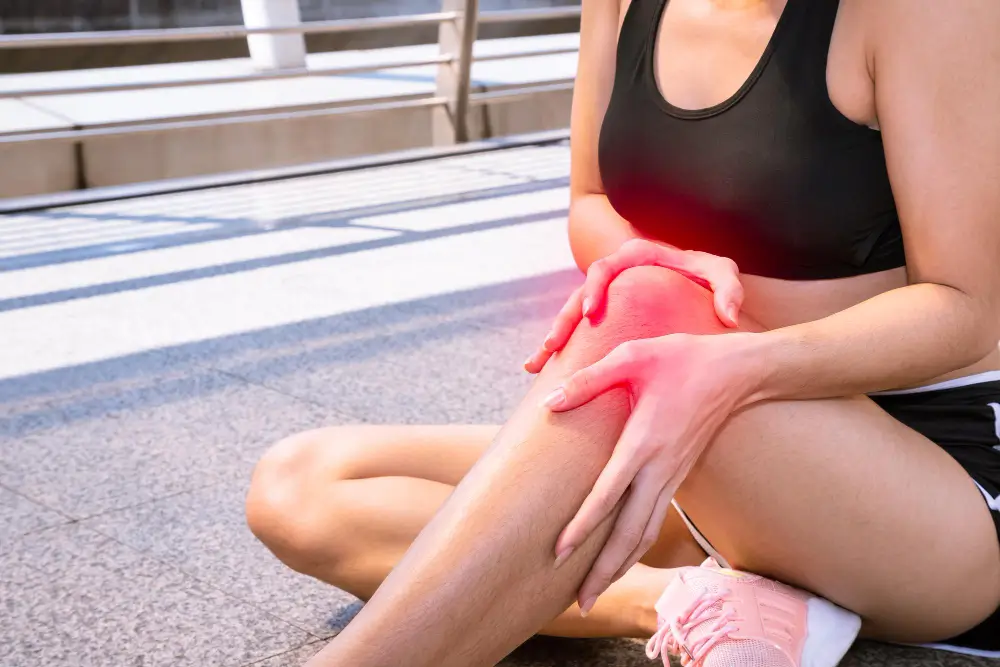How to Fix Knee Pain from Sitting Cross-Legged
What if your favorite way to sit is actually the cause of that nagging knee pain? Many people overlook the strain that builds up from simple daily habits—until discomfort appears. Is sitting cross-legged really the problem? In this article, we’ll explore the surprising connection and how to ease knee pain without giving up the positions you enjoy most.
Regain strength and mobility—Start your torn ACL recovery treatment now! 💥🏃♂️

Immediate Relief for Knee Pain After Sitting
Knee pain after sitting cross-legged is a common issue, but there are simple and effective ways to ease it quickly. By combining rest, physical care, and a few adjustments to your routine, you can reduce swelling, improve circulation, and feel better fast.
Rest and elevation: Resting the knee helps prevent the pain from getting worse. Avoid weight-bearing activities or any movement that causes discomfort. Keeping your leg elevated, preferably with pillows, can reduce swelling and help blood flow, speeding up recovery.
Ice application: Ice is an effective way to reduce swelling and relieve pain. Wrap ice cubes or a cold pack in a towel and place it on the affected area for 15 to 20 minutes. You can repeat this every 2 to 4 hours during the day, avoiding direct ice-to-skin contact.
Compression: Using an elastic bandage can help manage swelling and provide stability. Wrap the knee snugly, but not too tightly, to avoid restricting circulation. When used correctly, it can ease pain and improve mobility.
Over-the-counter pain relievers: If physical measures don’t provide relief, medications like ibuprofen or naproxen may help if inflammation is present. Acetaminophen is another option when only pain is present. It’s a good idea to check with a healthcare provider before using medications long-term.
Gentle exercises: Keep the knee active without straining it. Gentle stretches like knee flexion and extension or straight leg raises are helpful. You can also include strengthening exercises such as bodyweight squats, heel raises, and targeted routines for the quadriceps and calves, always with care.
After initial swelling has gone down, applying heat can help relax the muscles and improve circulation. As for posture, try sitting with both feet flat on the floor, avoid crossing your legs for long periods, and use chairs with proper support. Maintaining a healthy weight can also reduce stress on the knees—even a small weight change can make a difference.
Why Sitting Cross-Legged Can Cause Knee Pain
Although sitting cross-legged might feel comfortable or seem harmless, this position can negatively affect the knees and other parts of the body. Holding it for extended periods can lead to tension, misalignment, and compression of structures that directly affect the knee joint.
Hip and Knee Misalignment
Crossing your legs rotates the hip inward and keeps the knee in a prolonged flexed position. This can strain the ligaments, tendons, and tissues around the joint.
- Internal hip rotation: Alters the natural alignment of the leg.
- Forced knee flexion: Increases pressure on sensitive joint structures.
- Built-up tension: Can lead to discomfort during movement or position changes.
Peroneal Nerve Compression
Crossing the legs can compress the peroneal (fibular) nerve on the outer side of the leg near the knee. This compression can cause:
- Numbness
- Tingling
- Sharp pain in the leg or foot
General Postural Misalignment
Sitting cross-legged affects more than just the knees. It can alter your body posture by:
- Forcing the spine into unnatural curvature
- Causing one shoulder to elevate unintentionally
- Increasing muscle strain, leading to fatigue or discomfort
Increased Pressure on the Kneecap
Keeping the knee flexed, especially when weight is unbalanced, adds pressure to the kneecap. Medical sources indicate this pressure can exceed 1,000 pounds in certain positions like squatting, which may worsen cartilage wear and pain during movement.
While sitting cross-legged may seem harmless, over time it can create issues in the knees, hips, posture, and circulation. Misalignment, nerve compression, and joint pressure all contribute to musculoskeletal discomfort—especially when this position is held for long periods.
When to See a Specialist
Knee pain from sitting cross-legged might seem minor or temporary, but there are times when you should consult a specialist.
If the pain becomes intense and starts interfering with your daily activities or walking becomes difficult, you may be facing a more serious issue. When discomfort doesn’t improve with rest, ice, or basic pain relievers, don’t ignore it—seek medical advice.
Signs like swelling, redness, or warmth around the knee may point to significant inflammation or even infection. Fever along with knee pain and inflammation is another warning sign that calls for immediate attention. Visible deformities or difficulty fully bending or straightening the joint also deserve a professional evaluation.
If you’ve had a sudden injury like a fall or a direct blow and heard a pop or felt a grinding sensation in the knee, don’t delay seeking help. Not being able to bear weight on the affected leg is another indicator to visit a specialist. Getting medical attention promptly can speed up recovery and help you avoid more serious complications later on.
Sources:
- Demirakos, G. (2017). Fix My Knee: A Guide to Preventing and Healing from Injury and Strain. Rowman & Littlefield.
- Halpern, B., & Tucker, L. (2003). The Knee Crisis Handbook: Understanding Pain, Preventing Trauma, Recovering from Injury, and Building Healthy Knees for Life. Rodale Books.